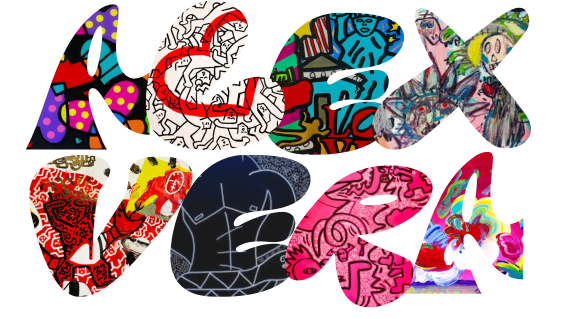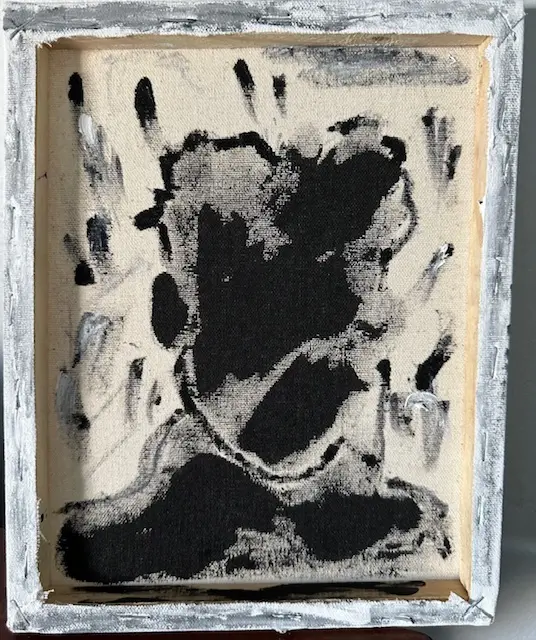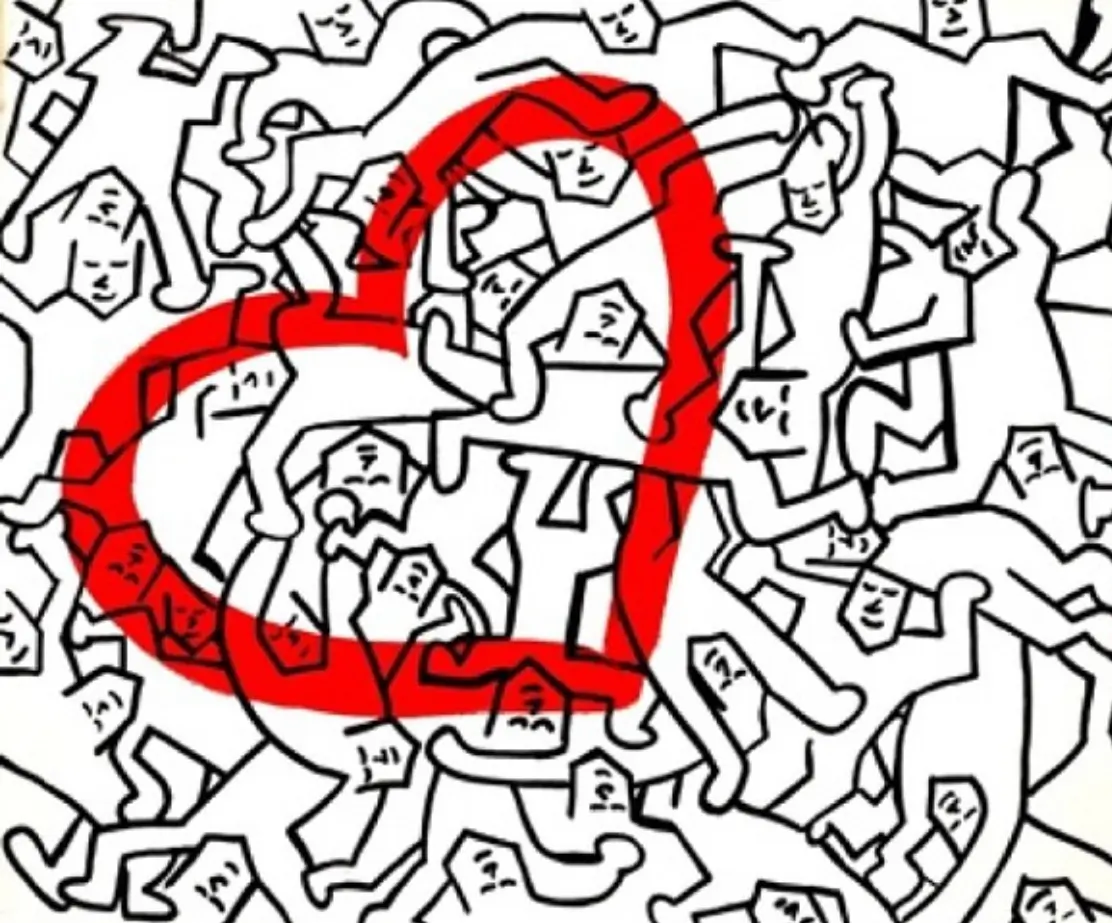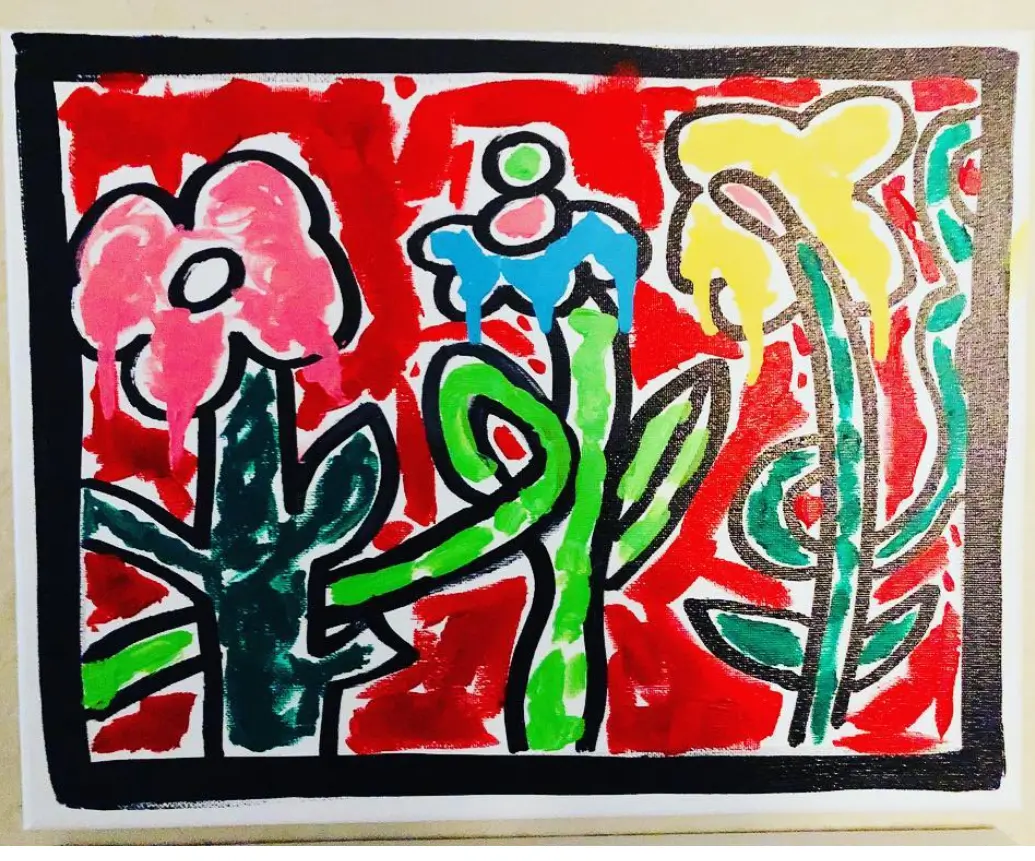Wynwood Is Changing Again
As the sun sets on a typical Saturday night in Wynwood, Miami, the streets come alive with an energy that is infectious. The area is already bustling with activity, despite the fact that the party doesn’t usually start until late in the evening. As cars jam-pack the streets, the sound of reggaeton and rap blares out of rolled-down windows, creating a communal soundtrack that is impossible to ignore. It’s evident that everyone is here to have a good time.
As party buses with thumping music blare on by, it becomes clear that Wynwood is a place where people come to let loose and have fun. Passengers drape out of the windows with bottles of champagne, adding to the already electric atmosphere. Women in bodycon dresses and heels skip down 24th Street, laughing and taking in the sights, but are frequently met with entry lines that snake around corners. Men in button-down shirts and slacks, vape and wait patiently in line, as they know the bouncers have a “no shorts for men” mandate.
It’s easy to wonder if anyone is here for the art that Wynwood was once known for. The area has a rich history of street art and graffiti, but on this particular night, it seems like partygoers are here for a different reason. However, as the night wears on and the crowds begin to thin out, the true essence of Wynwood starts to reveal itself. The street art and graffiti that decorate the walls come to life under the glow of the street lamps, reminding visitors of the area’s vibrant cultural past.
Wynwood, a once humble cluster of warehouses, has undergone a transformation to become one of the world’s most beloved and gritty art districts. Despite having once been home to 70 galleries, collections, and museums, only 15 remain today, outnumbered by bars, clubs, and restaurants. The colorful murals still adorning the walls make for an Instagram-worthy backdrop, and Wynwood is now a hotspot for locals and tourists to eat, drink, and party.
As the COVID-19 lockdowns lifted, the neighborhood has evolved yet again into a flashy nightlife destination. However, club owners worry that this reign may be short-lived. They fear that their fate will mirror that of the galleries before them. Dozens of condos currently under construction, with cranes towering over the district, may signal a new iteration of Wynwood – residential.

How Wynwood Started
Wynwood, one of Miami’s most vibrant neighborhoods, has undergone multiple transformations since its inception. Initially known as a garment district in the early 1920s, the area was characterized by enormous warehouses and factories that housed shoe manufacturers and button retailers. For many years, the residents were working-class individuals. However, in the 1950s, the construction of I-95 caused many of these families to move to the suburbs, leaving an area that once looked much like Miami’s version of Stars Hollow, Connecticut – the fictional city Gilmore Girls is set in. It was at that time so small and quaint.
In the years that followed, a wave of Puerto Ricans moved to Wynwood, and the neighborhood soon earned the nickname “Little San Juan.” However, in the late 1970s and early 1980s, the area began to experience significant deterioration. The community was plagued by drug use, violence, and poverty, and Wynwood soon became known as one of the most dangerous places in Miami.
For many people who remember the area in the 1980s, the transformation of Wynwood into one of Miami’s most vibrant neighborhoods is remarkable. Harold Golen, a gallerist in the area, remembers the neighborhood’s dark days well. “In the 1980s, Wynwood was the most dangerous place in Miami,” he recalls.
Golen, a gallerist with a space on NW Second Avenue situated just south of 23rd Street, recounts a time when lost tourists would accidentally end up in Wynwood, mistaking it for Miami Beach. These visitors, with their sunburns and foreign accents, would often fall victim to robbery and even violence. According to Golen, the problem became so pervasive that there was even a punk rock band named Dead German Tourist that emerged during that era.
However, by the mid- to late-1990s, things began to change. Despite the continued danger, some galleries were drawn to the neighborhood’s attractive prices and spacious warehouses, signaling a shift towards a more art-focused community.

The Art Galleries Move Into Wynwood
In the early 1990s, the art-collecting couple Mera and Don Rubell from New York were among the first to recognize the potential of Wynwood as an art district. The Rubell’s were also known to be one of the first to buy art from up and coming artists like Keith Haring. They purchased a 40,000-square-foot former U.S. Drug Enforcement Administration warehouse for the cost of a small apartment in New York City and converted it into the Rubell Family Collection, showcasing their massive sculptures and paintings.
Their presence in the area and their attendance at Art Basel in Switzerland led them to push for the fair to come to Miami. It was their son, Jason Rubell, who had the idea of using shipping containers to display art on the sand in Miami Beach, which was a huge success and led to Art Basel’s debut in Miami in 2002.
Wynwood’s reputation as an art destination began to grow, and more galleries opened in the neighborhood. Emerson Dorsch gallery was established in 2000, followed by David Castillo gallery in 2005, Pan American Art Projects in 2006, and Gallery Diet (now Nina Johnson Gallery) and Harold Golen in 2007. These gallerists participated in the Second Saturday art walk, which helped attract Miami’s culture-minded residents to the once-neglected neighborhood.
In the mid-2000s, Tony Goldman, a prominent real estate developer, saw the potential in Wynwood and started purchasing buildings in the area. He converted them into modern and hip spaces, and in 2008, he opened Joey’s Italian Cafe, the first restaurant in the neighborhood.

Wynwood Walls
Wynwood Walls, the brainchild of real estate developer Tony Goldman, burst onto the scene in 2009 and has since become a global icon in the art world. The outdoor mural museum features the works of renowned artists such as Shepard Fairey, Os Gemeos, and Ron English. In 2018, the Walls were even used as the backdrop for the wedding of Miami hospitality mogul David Grutman and his partner, Isabela Rangel, with celebrity guests including Kim Kardashian and Kanye West.
As Wynwood continued to gain popularity as an art district, the colorful murals that adorn the neighborhood’s walls became a major draw for visitors. The area’s galleries and art walks also helped to cement its reputation as a hub for culture in Miami.
However, the neighborhood’s rise to prominence wasn’t without its challenges. In 2011, three armed robbers held up patrons at Joey’s Italian Cafe, the first restaurant in the area, and stole cell phones and cash from the register. Despite this setback, Wynwood continued to evolve and grow.

Wynwood Restaurants
As the 2010s rolled around, Wynwood started to gain a hip reputation while still staying true to its art-focused roots. Visitors no longer just came to see galleries and street art, but also to explore the numerous small shops, breweries, bars, and cafés that now lined the neighborhood’s blocks.
Lester’s, a local favorite, opened in 2010 on NW Second Avenue, and Panther Coffee’s first outpost quickly followed. Wood Tavern opened in 2011, with Gramps debuting in 2012. The neighborhood began to attract an underground, artsy crowd, and soon became known as Miami’s “hipster” hangout.
Chef Brad Kilgore’s Alter opened in 2015 and quickly became one of the city’s swankiest restaurants, famed for its meticulous plating. Kilgore’s work earned Alter a finalist spot for the James Beard Foundation’s Best New Restaurant in the nation in the following year.
The food scene continued to gain traction with the opening of restaurants like Kush and Coyo Taco in 2015, and Kyu in 2016. As the neighborhood became more popular, some of the gallerists who had helped put Wynwood on the map began to pack up and leave due to rising rents.

Wynwood Miami Art Galleries Leaving The Area
Frederic Snitzer’s and David Castillo’s art galleries left in 2014, with Nina Johnson and Emerson Dorsch following in 2015, and Pan-American Projects departing in 2016. Finally, the Rubell Family Collection departed from Wynwood in 2019.
Harold Golen, a gallerist in Wynwood, is among the few who remain in the neighborhood. He notes that as more businesses moved into the area and developers bought up buildings, rent increased drastically. This rise in rent forced many gallerists to find more affordable areas, such as Little River near 79th Street. The visitors to Wynwood also changed, becoming younger and more interested in retail boutiques and food.
According to Golen, his business had to change to adapt to the new visitors. He notes that people are no longer just coming for the art, but for the shopping experience. Many people who visited his gallery could not afford to buy the artwork, but they still appreciated it. As a result, his gallery evolved into more of a store.
Although he still sells artworks, he no longer hosts openings. Instead, his inventory has expanded to include more affordable items like vinyl figures, T-shirts, postcards, stickers, books, and other novelty merchandise. The Kawaii Universe brand, which once had its own store/gallery a few blocks from Golen, is now part of his gallery as well. Golen says that his business has been good overall, and he is doing the best business he ever did because he has what people are looking for. He always tries to find the coolest stuff, and people appreciate that, resulting in repeat customers all the time.
Remember earlier in the article it was mentioned how many galleries still remain in Wynwood? I’m going to repeat it here again: Wynwood went from 70 galleries, collections, and museums, calling it home to only 15 that remain today. From the years 1995 when the first of the art galleries moved in, reviving the once dangerous city, to present. What does the future hold for a city that was once revitalized by art but now losing the essence of its saving grace?

Wynwood Miami Bars
Wynwood was once a destination only for art galleries and murals. But gradually became known as well for affordable drinks, live music, and a laid-back atmosphere. It was a place where locals and visitors could gather for a casual evening or to enjoy live music by up-and-coming bands. However, two recent high-profile closings have changed the. neighborhood’s dynamic. The Electric Pickle, the longest-running nightclub in Wynwood, closed in 2019 due to rising rents and changing customer preferences.
Wood Tavern, another popular bar in the area, closed in March 2020, with owner Cesar Morales citing financial strain from the pandemic. Morales notes that the neighborhood has undergone a dramatic shift in profile, from an artsy and bohemian vibe to one characterized by glass buildings and high-end establishments. He acknowledges that business is business, but laments the loss of mom-and-pop shops, art galleries, and bars that were once integral to the community.
Despite these changes, some establishments have managed to remain. Gramps, for example, has maintained its original character since opening in 2012, offering air conditioning, cold beer, and cocktails in a vibrant orange building. The bar continues to attract loyal patrons who come for the affordable drinks and to enjoy live music, comedy, and drag shows.
Morales has also managed to adapt to the changing landscape, relocating Wood Tavern to a new spot nearby and reopening it as a part of his new establishment, Pizza & Beer. He reopened the new Wood in July 2020, and longtime patrons showed up to fill the void left by the closure of other beloved establishments.
Wynwood Night Clubs
Miami’s Wynwood neighborhood is undergoing a transformation as the area gains popularity and more businesses move in. While the neighborhood was once known for its casual and affordable nightlife, new clubs and sleek bars are now charging steep cover fees, with some starting as early as 7 p.m. and going as high as $40. Some are even calling Wynwood “the next South Beach,” which was once the epicenter of Miami’s nightlife scene.
Many locals agree that South Beach’s glory days are long gone. The area was once a hotspot for partygoers, but now it’s viewed as a tourist trap with exorbitant prices that have driven away many Miamians. “South Beach 20 years ago was amazing,” says Philippe Kalifa, who has opened two popular establishments in Wynwood. “You wanted to party, you go to South Beach. [But now], if you’re a Miamian, you don’t go to South Beach because it’s for tourists, everything is overpriced.”
As Wynwood continues to grow and change, it remains to be seen whether it will follow in South Beach’s footsteps or forge its own path in Miami’s nightlife scene. As more high-end bars and clubs with cover charges pop up in Wynwood, some locals are worried that the neighborhood could lose its charm and become another South Beach, where exorbitant prices and tourists reign supreme.
Philippe Kalifa, who opened El Patio, Wynwood’s first Latin bar, in 2016, and Mayami Mexicantina, an upscale dining concept that transforms into a nightclub later in the evening, in 2020, believes that maintaining balance is crucial to Wynwood’s success. He argues that the neighborhood’s multicultural melting pot, which ranges from affordable bars to high-end restaurants, is what makes Wynwood special.
Without this diversity, he fears that Wynwood will lose its identity. Other new nightlife spots in Wynwood, such as Le Rouge, Oasis Wynwood, and Pilo’s Tequila Garden, cater to a mix of tourists, locals, and new residents who moved to the area during the pandemic, representing a new era of nightlife in Wynwood.

New Housing In Wynwood Miami
Wynwood has undergone even some more significant changes in recent years. Although some of the old businesses and murals remain, the neighborhood’s primary focus, customer base, and prices have all shifted. However, with such rapid evolution, it’s impossible to predict what the future holds for Wynwood.
One of the major concerns for the neighborhood’s future is overdevelopment. Some business owners fear that the neighborhood could be purchased by developers, leading to a complete shift towards residential areas and pushing out the nightlife scene. “The city wants to help us — the owners of businesses — but I think the developers are too powerful,” says Philippe Kalifa, who owns two bars in the neighborhood.
In 2015, Wynwood underwent rezoning, which was led by the city-run Wynwood Business Improvement District (BID) to introduce more “residential, entertainment, and culinary options,” according to Taylor Cavazos, a senior account executive for Kivvit, a public relations firm hired by the BID. The initiative, however, also made the neighborhood more developer-friendly, allowing construction of residences up to 12 stories high. The increased construction height limit has raised concerns about overdevelopment and loss of the area’s unique character.
The rezoning of Wynwood in 2015 paved the way for a new wave of development in the district. As a result, there are currently 15 luxury condos and apartment buildings under construction in the area, signaling a significant shift in the neighborhood’s landscape.
But with its rapid gentrification, some business owners and residents are concerned that the neighborhood’s charm and character may be lost to luxury condos and high-end shops. As more residential buildings are constructed, some worry that what is left of Wynwood’s art scene and nightlife may suffer due to noise complaints and changing demographics. However, others, like Philippe Kalifa, president of the Wynwood Restaurant and Bar Association, are fighting to preserve the neighborhood’s soul.
“It’s important to try to work with officials and developers. We all poured millions of dollars into our businesses,” Kalifa says. “We don’t want to pack up and move elsewhere like the low-income and minority households, gallerists, cafés, and bars before us.”
As the future of Wynwood remains uncertain, one question lingers: can a balance be struck between commercial and residential interests while preserving the vibrant art and entertainment scene that has put Wynwood on the map and has made it one of the most popular places in Miami?







